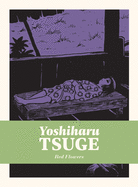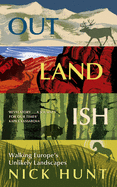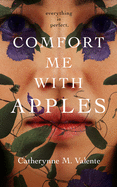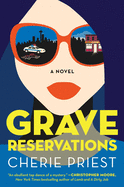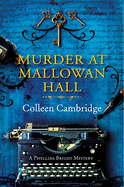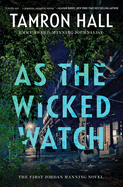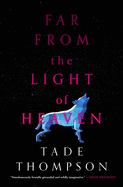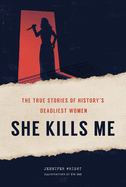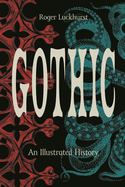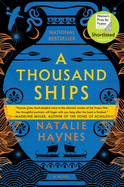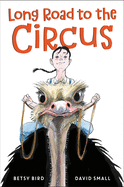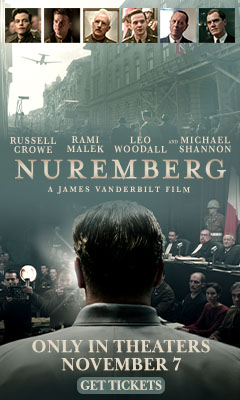Friday, October 29, 2021
I do not like to be scared. I avoid horror movies and true crime podcasts and while October may be my favorite month, I cringe when fright masks, severed rubber limbs and oozy fake blood pop up around the neighborhood.
The exception to my horror trope avoidance is vampires. I await each weekly installment of Jemaine Clement's hilarious What We Do in the Shadows and regularly boost the 1980s goth staple The Hunger on the monthly Bowie Book Club Podcast.
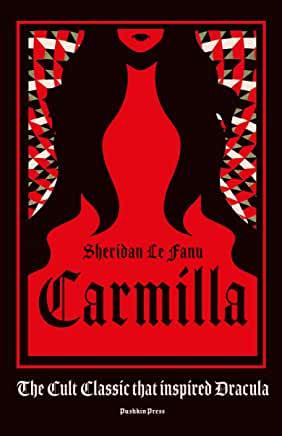 Carmilla by Sheridan LeFanu (Pushkin Press, $18.95) is one of the earliest vampire novels. Originally serialized in 1871, more than two decades before Bram Stoker's more ubiquitous Dracula, LeFanu's novel not only creeps through classic folkloric fragments of vampire legends, but also weaves in themes of Victorian lesbianism and questions the passivity of women in literature of the time.
Carmilla by Sheridan LeFanu (Pushkin Press, $18.95) is one of the earliest vampire novels. Originally serialized in 1871, more than two decades before Bram Stoker's more ubiquitous Dracula, LeFanu's novel not only creeps through classic folkloric fragments of vampire legends, but also weaves in themes of Victorian lesbianism and questions the passivity of women in literature of the time.
In the shadowy land of Styria, fragile Carmilla is graciously offered recuperation in the home of our young narrator and her father. The fast attachment of the two girls turns sinister and leads the narrator's desperate little community to a mysterious secret in the ruins of the neighboring Karnstein estate. This quick and satisfyingly eerie novel is a great pick for a Halloween night or for the traditional Christmas Eve ghost story read-aloud.
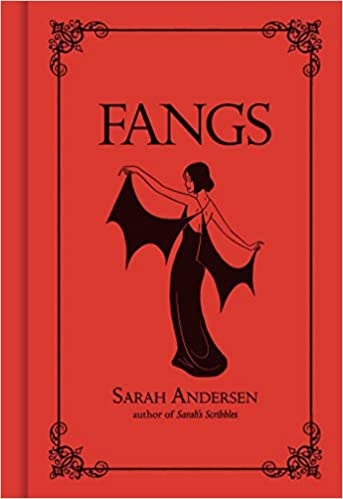 If you dislike being frightened even more than I, fear not; Fangs by Sarah Anderson (Andrews McMeel, $14.99) is the vampire book for you. Anderson's heroine is your average 300-year-old immortal negotiating the 20-somethings dating game. This collection of comic shorts depicts the early days of our vampire's romance with a vaguely lumbersexual werewolf. While he resists chasing squirrels and eating garlic, she learns to avoid wearing silver jewelry or biting too hard when necking with her beau. This little romance is heartwarmingly funny and won't trigger nightmares. --Kristianne Huntsberger, partnership program manager, Shelf Awareness
If you dislike being frightened even more than I, fear not; Fangs by Sarah Anderson (Andrews McMeel, $14.99) is the vampire book for you. Anderson's heroine is your average 300-year-old immortal negotiating the 20-somethings dating game. This collection of comic shorts depicts the early days of our vampire's romance with a vaguely lumbersexual werewolf. While he resists chasing squirrels and eating garlic, she learns to avoid wearing silver jewelry or biting too hard when necking with her beau. This little romance is heartwarmingly funny and won't trigger nightmares. --Kristianne Huntsberger, partnership program manager, Shelf Awareness
Comfort Me with Apples
by Catherynne M. Valente
Catherynne M. Valente (Space Opera) delves into the commonalities between two archetypal stories in a dark, sumptuous thriller novella set in a frightening fairytale world.
Every morning, Sophia awakens to "the honeyed, liquid thought" that she was "made for him," her husband. Though frequently away on business, he provides all she could ever want. "It feels like getting away with something, to have so much," including a perfectly ordered community, kind neighbors and a beautiful home. She spends her identical days in a never-ending fog of housekeeping and polite socializing. Sophia wants for nothing, until she finds a brush with long black hair that isn't hers, followed by a bit of bone. Then she wants answers, including what her husband is really keeping in their locked, forbidden cellar. Unfortunately for Sophia, knowledge is a perilous commodity in her world, and her husband's secrets will command a high price.
In chapters titled after evocatively named apple varieties, Valente carefully grafts the fairytale Bluebeard with Judaic mythology for a slim slice of terror that holds up a mirror to the misogyny inherent in many well-known stories. Her decadent, luscious prose is laced with touches of whimsy playing in contrast to the air of creeping suspense. Interspersed excerpts from the community's homeowners association contract provide vaguely threatening reminders that punishment awaits anyone who breaks a rule or expectation. Comfort Me with Apples reminds readers that commonplace tales often hide erased women in their cellars, and the poison in some fruits is simply truth. --Jaclyn Fulwood, blogger at Infinite Reads
Discover: In a dark, sumptuous thriller, Catherynne M. Valente holds up a mirror to the misogyny at the heart of some often-told tales.
Mystery & Thriller
Grave Reservations
by Cherie Priest
Cherie Priest (The Toll; The Inexplicables) is a prolific author who has published across genres, including steampunk, horror and sci-fi. In Grave Reservations, a smart and sassy first cozy mystery, she dips into the paranormal, telling the story of a fledgling travel agent with often erratic psychic tendencies.
Leda Foley of Seattle owns and operates her own travel agency--Foley's Far-Fetched Flights of Fancy--and is struggling to get it off the ground. Leda also experiences very "strong feelings" and vibes about things. For fun, she practices her supernatural skills at a local bar, where she clairvoyantly selects karaoke for customers. When Leda books a flight heading out of Orlando, Fla., for Seattle Police detective Grady Merritt, a widowed father of a 17-year-old daughter, she gets a flash of insight that he should not board the plane. It leads her to proactively change his flight plans, redirecting him into Atlanta.
Leda's hasty decision upsets Grady. However, when Leda's hunch spares the detective from a fatal plane accident, it creates a bond. When grateful Grady returns to Seattle, the two begin a secret partnership, where the detective enlists Leda's psychic ability to help solve a cold case. In the process, demons from Leda's and Grady's pasts resurface, forcing them both to tie up loose threads and reconcile respective losses.
Polished prose, steady pacing and quirky characters, including Leda's lovable and loyal, long-term best friend--along with a cast of eccentric bar patrons--add levity and wit to this suspenseful story that unravels darker themes. --Kathleen Gerard, blogger at Reading Between the Lines
Discover: An energetic cozy mystery follows a travel agent as she puts her psychic tendencies to work on a police cold case.
Murder at Mallowan Hall
by Colleen Cambridge
As Murder at Mallowan Hall begins, Phyllida Bright, the efficient housekeeper of Agatha Christie, aka Lady Mallowan, is astonished to discover the body of a man with a fountain pen sticking out of his neck. Mrs. Bright (whom the stodgy butler finds far too youthful to be a housekeeper) promptly calls the constabulary, and then informs the butler and the Mallowans. Both the police and the butler are miffed at the housekeeper's calm response, although Mrs. Mallowan's creative fancies are tickled. Inspired by the fictional detectives of her mistress, Mrs. Bright decides to use her position to her advantage, and begins to investigate the crime on her own, with a series of clever deductions.
The Mallowans have a house party going on, and the dead man was a last-minute arrival. Could one of the guests, or--horror of horrors--a member of the staff be responsible for the brutal attack? Mrs. Bright is determined to find out, and doesn't let the disapprobation of butlers or Scotland Yard inspectors dissuade her.
Charmingly told, with a full upstairs-downstairs cast of guests and servants, Murder at Mallowan Hall is a wonderful mystery by Colleen Cambridge (a pseudonym for a bestselling author). Readers are sure to keep guessing as they enjoy getting to know the servants and guests through the shrewd eyes of Mrs. Bright. Fans of Agatha Christie, historical fiction and fierce female leads are all sure to enjoy Murder at Mallowan Hall, the first in a planned historical mystery series. --Jessica Howard, bookseller at Bookmans, Tucson, Ariz.
Discover: This clever historical mystery introduces Agatha Christie's shrewd housekeeper as an amateur detective.
As the Wicked Watch
by Tamron Hall
Tamron Hall draws on the depth of her own experience as a broadcast journalist in As the Wicked Watch, in which a Black female reporter goes above and beyond the parameters of her job to help solve the gruesome murder of a Black teen in Chicago. Crime reporter Jordan Manning first covers the story of 15-year-old Masey James as a missing persons case--one that crawls under Jordan's skin, especially after her exclusive interview with Masey's mother. When Masey's body is eventually located in an abandoned playground, Jordan is the first on the scene: "I couldn't ignore what I recognized as a plea for help, for the police to care, for attention from the media, for answers."
Recognizing that her role in television gives her not only access, but the ability to put pressure on the people and groups that tend to ignore cases of missing--or murdered--Black girls, Jordan takes action: interviewing police leads, connecting with Masey's family, tracking down loose ends in Masey's case--and all in her signature stiletto heels. Throughout the case, Hall's experience in journalism is evident; Jordan's tracking of the clues makes for a compelling mystery, just as they offer a fascinating look behind the scenes of what it takes to get the perfect broadcast story--hours and hours of work often distilled down into minutes or seconds of television coverage. The first in a planned series featuring reporter Jordan Manning, As the Wicked Watch is a well-paced and thoughtful crime novel that probes questions of race, representation and community care. --Kerry McHugh, freelance writer
Discover: In this well-paced and tightly plotted mystery, a broadcast journalist probes questions of race and representation following the murder of a teenage Black girl.
Science Fiction & Fantasy
Far from the Light of Heaven
by Tade Thompson
Tade Thompson follows up his acclaimed Wormwood trilogy with a thrilling science fiction twist on the locked-room mystery. Thompson's vision of humanity expanding into the stars is distinct not only for its Afrofuturist bent but for its harshly grounded version of survival in space. The novel takes place in the Lagos system, home of the Lagos space station and the colony planet Bloodroot. First mate Michelle "Shell" Campion has arrived in the system on board the colony ship Ragtime; its mission to deliver hundreds of sleeping passengers to Bloodroot is interrupted by the horrific deaths of dozens on board. With the aid of a growing cast of characters, Campion must unravel the mystery of their deaths while dealing with the failure of the supposedly infallible AI running the ship and the grim encroachments of space.
The Afrofuturist origins of the Lagos system are crucial to the novel. Also crucial are the ravages of capitalism: the novel's mystery revolves around one of the deceased passengers, a ruthless titan of industry and "equal-opportunity exploiter" who, in a previous life, "would have owned and sold slaves." The novel's chief pleasures come in the way Thompson slowly reveals the layers of the central mystery--a mystery enlivened by the author's unusual spins on sci-fi tropes, introducing aliens that may have more in common with ghosts than Klingons, for example.
Far from the Light of Heaven harks back to the earliest days of space travel in its sense of space as a source of rapidly unfolding disasters that humans escape only by the skin of their teeth. --Hank Stephenson, manuscript reader, the Sun magazine
Discover: Far from the Light of Heaven establishes a tantalizing locked-room mystery in an original Afrofuturist science fiction setting.
Graphic Books
Red Flowers
by Yoshiharu Tsuge, transl. by Ryan Holmberg
The works of Yoshiharu Tsuge, credited with the "invention" of literary manga, finally arrived in the U.S. 65 years after he began publishing in Japan in 1955. His 2020 English-language debut, The Man Without Talent, was quickly followed by graphic powerhouse Drawn & Quarterly's recognition of Tsuge's global gravitas with an announced seven-volume series, the Complete Mature Works of Yoshiharu Tsuge, which launched with The Swamp. The second installment, Red Flowers, collects a dozen compelling stories from 1967 to 1968, the majority featuring Tsuge's alter ego, who's often seeking fishing spots or hot springs.
Pescatarian adventures include the titular "Red Flowers," in which graphic-Tsuge meets a young schoolgirl working at a remote snack shack for her deadbeat alcoholic father, and "Master Ben of the Honyara Cave," featuring an innkeeper who steals and eats priceless carp. Not-so-soothing hot springs appear in "Futamata Gorge," in which an injured monkey joins bathers on the eve of a typhoon, and "Ondol Shack," in which rambunctious guests ruin what should have been a peaceful getaway. Tsuge meets a sanatorium escapee in "The Incident at Nishibeta Village," and shows off his swimming prowess in "Scenes from the Seaside." He shrewdly confronts the relentless Japanese/Korean divide in "The Lee Family," the collection's highlight.
Comics historian and professor Ryan Holmberg continues his translation of all Tsuge's English titles thus far, as well as adding another illuminating essay co-written again with notable editor/researcher Mitsuhiro Asakawa. Audiences might choose to enjoy the panels without additional context, but for more serious manga aficionados, Holmberg and Asakawa provide a wealth of historical and artistic research and enlightenment. The series' progression should further amplify Tsuge's international appeal. --Terry Hong, Smithsonian BookDragon
Discover: A dozen compelling, mostly peripatetic, stories by the inventor of literary manga.
Social Science
She Kills Me: The True Stories of History's Deadliest Women
by Jennifer Wright
Bloodthirsty women are a minority. However, that fact only encouraged Jennifer Wright (We Came First; Get Well Soon) to magnify their existence in She Kills Me, a thoroughly researched--at times shocking--examination of the most notorious female killers ever to walk the face of the earth. Spanning centuries and the particular histories of 40 women predators--from the working class to the elite--Wright serves up detailed, often gruesome and harrowing accounts of women murderers, offering possible reasons how and why they led homicidal lives.
People kill for various reasons--love, money, power, anger, revenge, even for fun. Wright covers them all, cataloguing the featured murderesses as Psychos, Poisoners, Bad Family Members, Black Widows, Scorned Women, Mercenaries, Killer Queens, Badass Warriors and Avenging Angels. Notorious inbred sociopath Countess Elizabeth Báthory (16th century) grew up in a castle and was close with a sadomasochistic aunt and Satanist uncle. A demoralizing childhood led her later to abuse and torture her servants. She was also known to bathe in the blood of virgins because it worked wonders on her skin. Báthory is said to have murdered more than 650 people in her lifetime. "Jolly Jane" Toppan was a 19th-century nurse whose pathological lying endeared her to sick patients and their families. If someone annoyed her, however, she secretly killed them with overdoses of morphine.
Fans of macabre crime stories will be held rapt by Wright's conversationally styled catalogue of chilling, diabolic horrors, enhanced with apropos illustrations by Eva Bee that depict each female slayer in the glory of her murderous fame. --Kathleen Gerard, blogger at Reading Between the Lines
Discover: This hair-raising collection catalogues 40 of the world's most notorious, devious and gruesome female killers.
Essays & Criticism
Gothic: An Illustrated History
by Roger Luckhurst
In his approachable and haunting Gothic: An Illustrated History, Roger Luckhurst, a professor of modern literature at University of London, presents the uncanny, unsettling and surprisingly political nature of the gothic aesthetic.
Luckhurst divides the book into four broad sections: "Architecture & Form," "The Lie of the Land," "The Gothic Compass" and "Monsters." It's a compelling structural choice, as readers are prompted to consider the gothic in a variety of contexts and settings instead of in a chronological sense. Though he covers what many readily associate with the word gothic--literature and cathedrals--Luckhurst's survey spans the globe and three centuries, exploring subjects including ruins, colonialism and tentacles.
As the author details each aspect of the gothic, he juxtaposes contemporary photos with historical imagery, adeptly connecting modern expressions of the gothic to buildings, literature and sensibilities of the past. When discussing the role of ruins in the gothic, for example, he includes images of ruins intentionally constructed by the super-wealthy in the early 1700s and contemporary "ruins porn"--images of buildings and spaces in cities like Detroit falling into disrepair.
When it comes to the lasting appeal of the gothic, Luckhurst takes a global view, connecting the gothic to prejudice throughout, reminiscent of Lovecraft Country or The Wicker Man. Monsters and haunted houses are still an immensely popular way to explore fear, especially fear of the Other, and the author gives readers a lot to think about when it comes to what they fear and why they choose to experience the gothic after all this time. --Suzanne Krohn, editor, Love in Panels
Discover: This fascinating and unsettling exploration of the gothic aesthetic shines light on some of the best-loved darker bits of culture through the last three centuries.
Travel Literature
Outlandish: Walking Europe's Unlikely Landscapes
by Nick Hunt
Nick Hunt (Walking the Woods and the Water) is on another walking adventure in Outlandish: Walking Europe's Unlikely Landscapes. Cognizant of the rapidly changing climate and the damage that long flights can do to the atmosphere, Hunt decides to try to find the most unlikely climates he can within Europe, close to his home in southern England. He settles on four areas: a patch of Arctic tundra in Scotland, a primeval Polish forest, an arid Spanish desert and the steppes of Hungary. Each of these four areas feels like it belongs elsewhere--perhaps the Amazon, Russia, the American west--but each is a strange little world unto itself within Europe's greener pastures.
Poetic and thoughtful, Hunt spends his time musing on the areas he's visiting and the more worrying climatological changes worldwide. He stops to analyze the history of reindeer in Scotland's Cairngorm mountains, how the Polish language looks almost as forested as the area he's traveling ("the impenetrable thickets of szczys, consonants as dense as an uncut grove"), the influence of Spanish desert on spaghetti westerns and how Hungary's steppes have changed its people--"open spaces often seem to foster closed mentalities, as if the scale turns people's minds inwards to seek shelter."
With insightful lyricism, Hunt does an excellent job of capturing the essences of the vastly different places he's visiting, demonstrating how humans have changed them, and vice versa. Outlandish: Walking Europe's Unlikely Landscapes is part travelogue, part ecological history and thoroughly fascinating. --Jessica Howard, bookseller at Bookmans, Tucson, Ariz.
Discover: This mindful travelogue explores unusual European landscapes and the influence of humanity upon the natural world.
Now in Paperback
A Thousand Ships
by Natalie Haynes
Known for her podcast Natalie Haynes Stands Up for the Classics, classicist and broadcaster Natalie Haynes (The Children of Jocasta; The Furies) reimagines the Trojan War from the viewpoints of the women, both mortal and immortal, caught up in it.
When the poet asks Calliope the muse to sing, she grants his request, but only shows him events as they affect the women, telling the reader, "They have waited long enough for their turn." In shifting chronological order and settings across the Mediterranean region, readers see the war's impact. Hecabe and the Trojan women face slavery and degradation at the hands of the Greeks. Sea-goddess Thetis grieves for her son Achilles, but also regrets the insult of having a mortal son. Abandoned in Ithaca, Penelope writes Odysseus increasingly wry letters about his unusual difficulty in escaping the beds of beautiful women. A host of wives, mothers, warriors and goddesses come forward with insightful comments on the true cost of war and who must pay it.
Haynes draws on Homer for material but also looks farther afield, to Euripedes, Ovid and others, even including a blink-and-miss-it exchange similar to a moment from the classic film The Clash of the Titans. Although the women perhaps focus overmuch on the actions and feelings of the men rather than their own lives, overall Haynes has created a fine addition to the body of fiction striving to give silent women characters a voice. --Jaclyn Fulwood, blogger at Infinite Reads
Discover: With great originality, classicist Natalie Haynes retells the story of the Trojan War from the viewpoints of the many women, goddesses and girls usually relegated to the narrative sidelines.
Children's & Young Adult
The Last Cuentista
by Donna Barba Higuera
Pura Belpré Honor-winning author Donna Barba Higuera (Lupe Wong Won't Dance) deftly blends Mexican folklore with science fiction in this thrilling and emotional post-apocalyptic novel.
When a solar flare sends Halley's Comet careening toward Earth in 2061, the government selects a group of "scientists, terra-formers and leaders" to inhabit another planet. After a 380-year-long stasis, 12-year-old Petra Peña, a Mexican American who longs to tell "cuentos" (stories) like her abuelita back on Earth, wakes up to discover that her family is gone, and a group called the Collective has hijacked the mission. The Collective has erased and reprogrammed the passengers' memories--"purging" those unwilling to abide--to "create a new history," one with no conflict or war but also without "differences in culture, in appearance, knowledge." Petra, who still has her memories, must use her storytelling abilities and quick wit to help the remaining passengers remember themselves before they're lost to the Collective forever.
In The Last Cuentista, Higuera, a grand cuentista herself, seamlessly weaves Mexican folklore with science fiction, balancing ancestral cuentos with the new suspenseful and dangerous stories Petra is living. Even though Petra is alone in her endeavor, her family is ever-present in her dreams, thoughts and stories, guiding her through her decisions and helping her navigate a new world. Higuera cleverly incorporates memories into present-day narration, which not only makes for a compelling story but also drives home Higuera's point that "by honoring the past, our ancestors, our cultures--and remembering our mistakes--we become better." A prime example of the importance of storytelling. --Lana Barnes, freelance reviewer and proofreader
Discover: In this thrilling, emotional post-apocalyptic novel, a 12-year-old aspiring storyteller wakes up 380 years in the future, on a new planet, and realizes she's the only person who remembers Earth.
Long Road to the Circus
by Betsy Bird, illus. by David Small
A girl in 1920 rural Michigan seizes a rare opportunity in this plucky, big-hearted middle-grade debut from librarian and author Betsy Bird (The Great Santa Stakeout), vivaciously illustrated by Caldecott medalist David Small (Imogene Comes Back!).
Twelve-year-old Suzy Bowles of tiny Burr Oak, Mich., has a strong grip, a double helping of gumption and a secret dream to leave her "dull as dishwater" town. When prodigal Uncle Fred returns home, his pattern of early-morning disappearances attracts her curiosity. Suzy follows him and learns he's training a cantankerous ostrich named Gaucho for retired circus doyenne Madame Marantette, who wants to set a world record for driving a surrey pulled by a horse and the gangly bird. To make the plan work, Gaucho needs a rider. In a flash of inspiration, Suzy offers herself for the position, hoping Madame will teach her the secret to getting out of Burr Oak. The task turns out to be tougher than expected. Aside from Gaucho's attitude and needing to hide her exploits from her parents, Suzy must cope with Madame's insistence she ride the bird sidesaddle. After all, a "farm girl riding an ostrich is a novelty. A young lady... riding an ostrich is an event."
Suzy's wry, folksy first-person narration should elicit plenty of giggles, and Small's striking pen-and-ink illustrations perfectly echo the text's energy and sense of whimsy. Bird's lighthearted, earnest romp is based on real people and events and encourages readers to seize opportunity tightly, even if it comes in a strange, long-necked package. --Jaclyn Fulwood, youth experience manager, Dayton Metro Library
Discover: A farm girl in Michigan in 1920 becomes an ostrich rider in this funny, heart-warming story of chasing one's dreams.
The Falling Girls
by Hayley Krischer
The Falling Girls is a dark, raw thriller about the complexities of teenage female friendships.
It's not easy being best friends with Jadis Braff. Shade Meyer shares everything with Jadis, whether it's a toothpaste or a bed, and the high school juniors mark each other with "stick and poke" tattoos. But Shade wants to prove to Jadis (and herself) that she can do something on her own. She joins the cheerleading team (which Jadis finds "archaic") and befriends the "Three Chloes": "the in-your-face tight circle that heads the squad," whose own friendship is starting to fray. Shade brings Jadis and her new friends together at the Homecoming dance, but when the night is cut short by the mysterious death of one of the Chloes, Shade is left grappling with how far Jadis would go to keep Shade tethered to her.
In The Falling Girls, Hayley Krischer (Something Happened to Ali Greenleaf) thoughtfully scrutinizes the complex layers of teenage female friendships that can fuel intense, unhealthy bonds, revealing insecurity, resentment and jealousy at the core. Krischer expertly uses underlying tension from her characters' toxic friendships and broken mother-daughter relationships--in which the daughters feel abandoned by their self-absorbed moms--to create a feeling of unease that carries through the whole book. Perfectly paralleled with these codependent partnerships is the "manic spirit" and grueling practice of cheerleading, which exemplifies the beauty and ugliness of both the sport and these friendships. An absorbing, intimate exploration of teenage female relationships. --Lana Barnes, freelance reviewer and proofreader
Discover: In this affecting thriller, high school junior Shade joins the cheerleading team to express her individuality, only to get entangled in a trio of friends with their own issues.
| Advertisement nuremberg--only in theaters november 7 |


